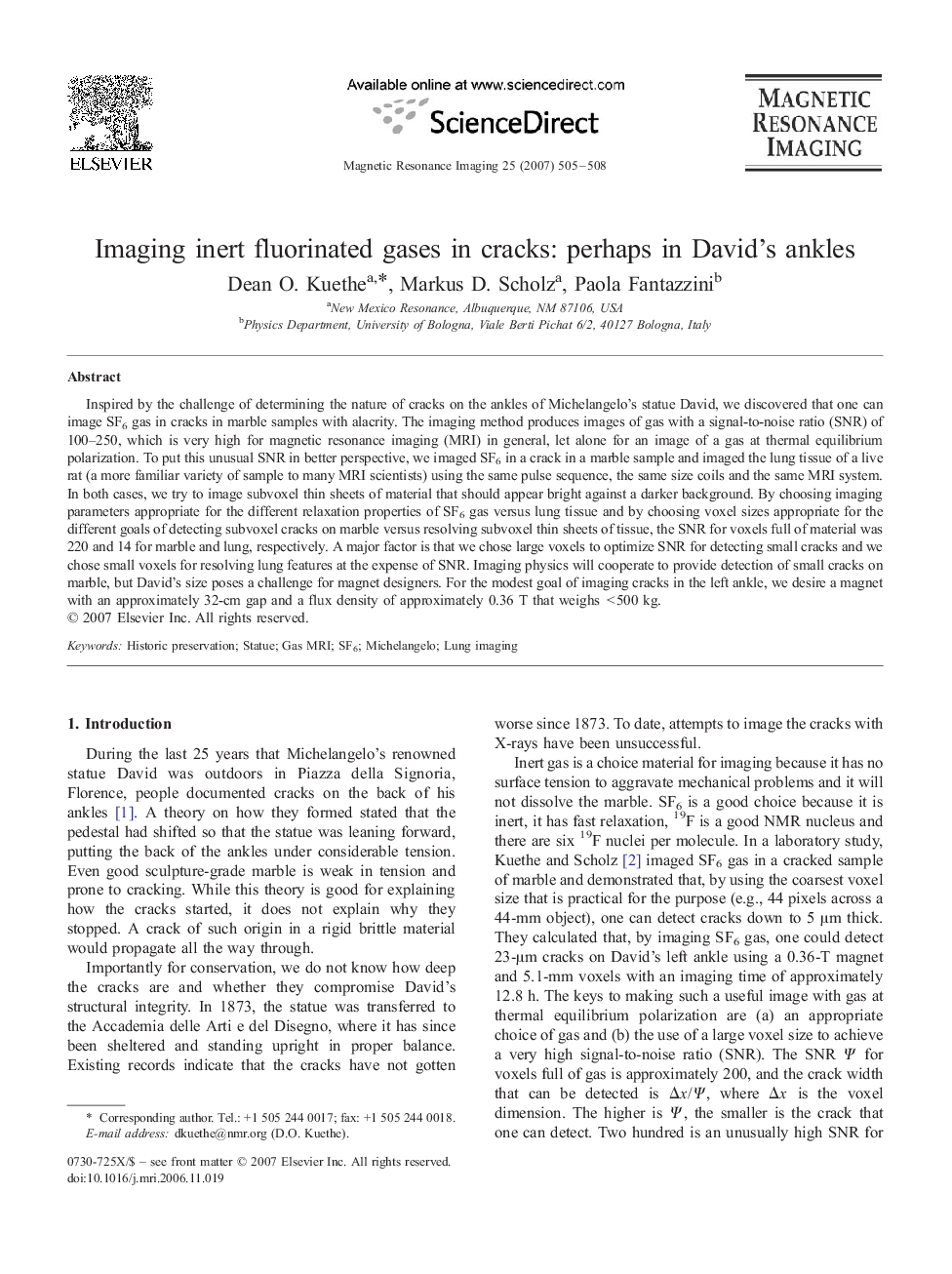| Article ID | Journal | Published Year | Pages | File Type |
|---|---|---|---|---|
| 1807789 | Magnetic Resonance Imaging | 2007 | 4 Pages |
Inspired by the challenge of determining the nature of cracks on the ankles of Michelangelo's statue David, we discovered that one can image SF6 gas in cracks in marble samples with alacrity. The imaging method produces images of gas with a signal-to-noise ratio (SNR) of 100–250, which is very high for magnetic resonance imaging (MRI) in general, let alone for an image of a gas at thermal equilibrium polarization. To put this unusual SNR in better perspective, we imaged SF6 in a crack in a marble sample and imaged the lung tissue of a live rat (a more familiar variety of sample to many MRI scientists) using the same pulse sequence, the same size coils and the same MRI system. In both cases, we try to image subvoxel thin sheets of material that should appear bright against a darker background. By choosing imaging parameters appropriate for the different relaxation properties of SF6 gas versus lung tissue and by choosing voxel sizes appropriate for the different goals of detecting subvoxel cracks on marble versus resolving subvoxel thin sheets of tissue, the SNR for voxels full of material was 220 and 14 for marble and lung, respectively. A major factor is that we chose large voxels to optimize SNR for detecting small cracks and we chose small voxels for resolving lung features at the expense of SNR. Imaging physics will cooperate to provide detection of small cracks on marble, but David's size poses a challenge for magnet designers. For the modest goal of imaging cracks in the left ankle, we desire a magnet with an approximately 32-cm gap and a flux density of approximately 0.36 T that weighs <500 kg.
